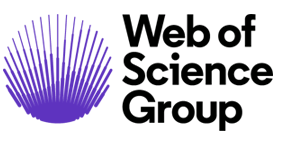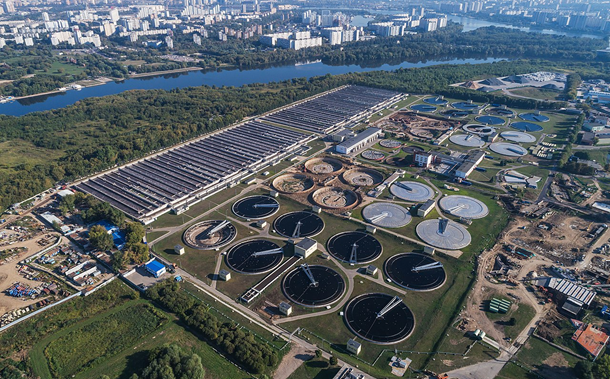Geodynamic Processes Monitoring of Subway Infrastructure Using Geodetic and Remote Sensing Methods
Downloads
This article examines the development of a methodology for monitoring geodynamic processes during the construction of the Almaty metro using an integrated approach that incorporates geodetic methods, laser scanning, and aerospace technologies. The study aims to enhance the safety of underground structures in the context of complex engineering-geological conditions and high-density urban environments. Monitoring was conducted at the "Saryarka" and "Bauyrzhan Momyshuly" stations, employing underground polygonometry, aerial surveys with unmanned aerial vehicles (DJI Mavic 3 multispectral), laser scanning (Faro Focus 3D X), and finite element numerical modeling (PHASE 2, AutoCAD Civil 3D). The geodetic work covered a 3201-meter section with the installation of 34 benchmarks, ensuring a relative measurement error of no more than 1:30,000. Laser scanning achieved an average point cloud density of 7 mm, enabling the creation of precise 3D tunnel models, identification of deviations from the design axis, and determination of critical stress zones. The study revealed that at a depth of 32.28 m, the maximum vertical stress reached 11.2 MPa, and horizontal stress was 2.7 MPa. At a depth of 19.58 m, the vertical stress reached 10.5 MPa, while the horizontal stress was 2.47 MPa. The maximum concentration of stresses in critical zones reached 20 MPa. The use of UAVs and aerospace technologies facilitated the creation of a highly accurate digital terrain model and the identification of potential deformation zones. The findings confirm the necessity of regular monitoring in dense urban and seismically active areas and demonstrate the potential of integrating modern technologies to improve the precision and efficiency of geodynamic assessments. The proposed methodology can be applied not only to metro construction but also to other underground structures, including mining industry facilities, both in Kazakhstan and internationally.
Downloads
[1] Kobayashi, T. (2024). Nationwide crustal deformation monitoring by SAR satellite. Proceedings of the 44th UJNR (United States–Japan Natural Resources) Earthquake Panel Meeting, Tokyo, Japan..
[2] Suito H. (2024). Postseismic deformation caused by the 2024 Noto Peninsula earthquake. Proceedings of the 44th UJNR Earthquake Panel Meeting. Tokyo, Japan.
[3] Bek, A. A., Nurpeisova, M. B., & Ormanbekova, A. (2016). Assessment of the technical condition of engineering structures. LAR LAMBERT Academic Publishing, ALMATY, Kazakhstan.
[4] Yoshida, N. (2009). Damage to subway station during the 1995 Hyogoken-Nambu (Kobe) earthquake. Earthquake Geotechnical Case Histories for Performance-based Design, 373-389.
[5] Wang, J., Luo, Z., Zhou, L., Li, X., Wang, C., & Qin, D. (2024). Surface Deformation Monitoring and Subsidence Mechanism Analysis in Beijing based on Time-series InSAR. ISPRS Annals of the Photogrammetry, Remote Sensing and Spatial Information Sciences, 10(1), 233–239. doi:10.5194/isprs-annals-X-1-2024-233-2024.
[6] Yu, A., Mei, W., & Han, M. (2021). Deep learning based method of longitudinal dislocation detection for metro shield tunnel segment. Tunnelling and Underground Space Technology, 113. doi:10.1016/j.tust.2021.103949.
[7] Hattanji, T., Koga, W., Kawano, T., Harada, S., Furuichi, T., Doshida, S., & Tanaka, Y. (2024). Human impacts on infilling rates of hollows in landslide-prone areas of western Japan: Estimation from radiocarbon dates and high-resolution DEMs. Earth Surface Processes and Landforms, 49(1), 277–290. doi:10.1002/esp.5672.
[8] Karaca, Ş. O., Erten, G., Ergintav, S., & Khan, S. D. (2024). Anthropogenic problems threatening major cities: Largest surface deformations observed in Hatay, Türkiye based on SBAS-InSAR. Bulletin of the Mineral Research and Exploration, 173(173), 235-252.. doi:10.19111/bulletinofmre.1298494.
[9] Jiang, Y., & Yu, X. (2025). Space-based long term condition monitoring of cold region pavement with PS-InSAR. Journal of Infrastructure Preservation and Resilience, 6(1), 4. doi:10.1186/s43065-024-00110-2.
[10] Perkins, O., Alexander, P., Arneth, A., Brown, C., Millington, J., & Rounsevell, M. (2024). Litigation challenging over-reliance on carbon dioxide removal requires quantitative feasibility assessment. EGU General Assembly Conference Abstracts, 5662. doi:10.5194/egusphere-egu24-5662.
[11] Palanisamy, S., Lobón, U., Cabrera, Humberto., Albiol, D., Batalla, A., Camafort, M., & Bento, L. (2024). Monitoring of Tunnels in Urban Environments: Complementing InSAR with in situ instrumentation. Proceedings of the 7th International Conference on Geotechnical and Geophysical Site Characterization, 18-21 June, 2024, Barcelona, Spain.
[12] Huang, C., Tan, L., Liu, J., & Yan, K. (2024). Multi-Temporal-InSAR Ground Deformation Mapping of Beijing Subway Network Based on ALOS-2 and Sentinel-1 Data. Polish Journal of Environmental Studies, 1-15. doi:10.15244/pjoes/194592
[13] Wang, R., Yang, M., Dong, J., & Liao, M. (2022). Investigating deformation along metro lines in coastal cities considering different structures with InSAR and SBM analyses. International Journal of Applied Earth Observation and Geoinformation, 115. doi:10.1016/j.jag.2022.103099.
[14] Pernebek, K., Abdibek, A., Soltabayeva, S., & Nurpeisova, M. (2022). Monitoring of deformations of structures in the metro construction zone. The Scientific Heritage, 89, 141–144. doi:10.5281/zenodo.6575898.
[15] Hou, Y. M., Wang, J. H., & Zhang, L. L. (2007). Three-Dimensional Numerical Modeling of a Deep Excavation Adjacent to Shanghai Metro Tunnels. Computational Science – ICCS 2007, 1164–1171. doi:10.1007/978-3-540-72588-6_184.
[16] Liu, B., Xu, W., Zhang, D., & Zhang, Q. (2022). Deformation behaviors and control indexes of metro-station deep excavations based on case histories. Tunnelling and Underground Space Technology, 122. doi:10.1016/j.tust.2022.104400.
[17] Luo, Z., & Das, B. M. (2016). System probabilistic serviceability assessment of braced excavations in clays. International Journal of Geotechnical Engineering, 10(2), 135–144. doi:10.1179/1939787915Y.0000000021.
[18] Ye, S., Zhao, Z., & Wang, D. (2021). Deformation analysis and safety assessment of existing metro tunnels affected by excavation of a foundation pit. Underground Space (China), 6(4), 421–431. doi:10.1016/j.undsp.2020.06.002.
[19] Zhang, W., Zhang, R., Wu, C., Goh, A. T. C., Lacasse, S., Liu, Z., & Liu, H. (2020). State-of-the-art review of soft computing applications in underground excavations. Geoscience Frontiers, 11(4), 1095–1106. doi:10.1016/j.gsf.2019.12.003.
[20] Zhang, Y. C., Guang-hua, Y. A. N. G., & Jie, Y. A. O. (2010). Numerical simulation and analysis of effect of excavation of foundation pits on metro tunnels. Chinese Journal of Geotechnical Engineering, 32(S1), 109-115.
[21] Tan, D., Li, A., Ji, B., Duan, J., Tao, Y., & Luo, H. (2023). Ground deformation monitoring for subway structure safety based on GNSS. Buildings, 13(11), 2682. doi:10.3390/buildings13112682.
[22] Bayramov, E., Sydyk, N., Nurakynov, S., Yelisseyeva, A., Neafie, J., & Aliyeva, S. (2024). Quantitative assessment of urban surface deformation risks from tectonic and seismic activities using multitemporal microwave satellite remote sensing: a case study of Almaty city and its surroundings in Kazakhstan. Frontiers in Built Environment, 10. doi:10.3389/fbuil.2024.1502403.
[23] Bayramov, E., Sydyk, N., Nurakynov, S., Yelisseyeva, A., Neafie, J., & Aliyeva, S. (2024). Quantitative assessment of urban surface deformation risks from tectonic and seismic activities using multitemporal microwave satellite remote sensing: a case study of Almaty city and its surroundings in Kazakhstan. Frontiers in Built Environment, 10. doi:10.3389/fbuil.2024.1502403.
[24] Qu, F., Lu, Z., Zhang, Q., Bawden, G. W., Kim, J. W., Zhao, C., & Qu, W. (2015). Mapping ground deformation over Houston–Galveston, Texas using multi-temporal InSAR. Remote Sensing of Environment, 169, 290-306. doi:10.1016/j.rse.2015.08.027.
[25] Halicioglu, K., Erten, E., & Rossi, C. (2021). Monitoring deformations of Istanbul metro line stations through Sentinel-1 and levelling observations. Environmental Earth Sciences, 80(9), 361. doi:10.1007/s12665-021-09644-0.
[26] Kobayashi, T. (2024). SAR-detected crustal deformation and topographic changes of the 2024 Noto Peninsula earthquake. Proceedings of the 44th UJNR Earthquake Panel Meeting, Tokyo, Japan.
[27] Ando, R., Fukushima, Y., Yoshida, K., & Imanishi, K. (2025). Nonplanar 3D fault geometry controls the spatiotemporal distributions of slip and uplift: evidence from the Mw 7.5 2024 Noto Peninsula, Japan, Earthquake. Earth, Planets and Space, 77(1). doi:10.1186/s40623-025-02187-9.
[28] Quinteros-Cartaya, C., Quintero-Arenas, J., Padilla-Lafarga, A., Moraila, C., Faber, J., Li, W., Köhler, J., & Srivastava, N. (2025). A deep learning pipeline for large earthquake analysis using high-rate global navigation satellite system data. Earth Science Informatics, 18(4), 516. doi:10.1007/s12145-025-02023-4.
[29] Li, X., & Xu, S. (2025). Multi-class Seismic Building Damage Assessment from InSAR Imagery using Quadratic Variational Causal Bayesian Inference. arXiv Preprint, arXiv:2502.18546. doi:10.48550/arXiv.2502.18546.
[30] Yang, Y. F., Liao, S. M., Liu, M. B., Wu, D. P., Pan, W. Q., & Li, H. (2022). A new construction method for metro stations in dense urban areas in Shanghai soft ground: Open-cut shafts combined with quasi-rectangular jacking boxes. Tunnelling and Underground Space Technology, 125. doi:10.1016/j.tust.2022.104530.
[31] Xu, Y., Xia, M., Zhang, W., Li, Z., & Zhang, Z. (2022). Risk assessment of an existing metro tunnel in close proximity to new shield tunnels following construction. Journal of Engineering, 2022(1), 5774764. doi:10.1155/2022/5774764.
[32] Huang, Q., Miao, C., Yuan, Y., Qu, Y., & Gou, Y. (2023). Failure analysis of metro tunnel induced by land subsidence in Xi’an, China. Engineering Failure Analysis, 145. doi:10.1016/j.engfailanal.2022.106996.
[33] Zhou, F., Zhou, P., Li, J., Lin, J., Ge, T., Deng, S., Ren, R., & Wang, Z. (2022). Deformation characteristics and failure evolution process of the existing metro station under unilateral deep excavation. Engineering Failure Analysis, 131. doi:10.1016/j.engfailanal.2021.105870.
[34] Qian, W., Qi, T., Zhao, Y., Le, Y., & Yi, H. (2019). Deformation characteristics and safety assessment of a high-speed railway induced by undercutting metro tunnel excavation. Journal of Rock Mechanics and Geotechnical Engineering, 11(1), 88–98. doi:10.1016/j.jrmge.2018.04.014.
[35] Zhang, B., Liao, X., Zhang, J., Xiong, S., Wang, C., Wu, S., ... & Li, Q. (2023). Megalopolitan-scale ground deformation along metro lines in the Guangdong-Hong Kong-Macao Greater Bay Area, China, revealed by MT-InSAR. International Journal of Applied Earth Observation and Geoinformation, 122, 103432. doi:10.1016/j.jag.2023.103432.
[36] Nepeina, K., Bataleva, E., & Alexandrov, P. (2023). Electromagnetic Monitoring of Modern Geodynamic Processes: An Approach for Micro-Inhomogeneous Rock through Effective Parameters. Applied Sciences, 13(14), 8063. doi:10.3390/app13148063.
[37] Savchyn, I., & Bilashuk, A. (2023). Differentiation of Recent Geodynamic Processes within the Carpathian Mountains Based on GNSS Data. International Conference of Young Professionals “GeoTerrace-2023”, 1–5. doi:10.3997/2214-4609.2023510011.
[38] Kaftan, V. I., Melnikov, A. Yu., & Dokukin, P. A. (2025). Evolution Of Inner Crustal Displacement Deficit According To the GPS Data in Connection with Seismicity in the Period Of 2014–2024 And The Mw=7.4 Hualien Earthquake, Taiwan. Geodynamics & Tectonophysics, 16(1), 0812. doi:10.5800/gt-2025-16-1-0812.
[39] Bayramov, E., Sydyk, N., Nurakynov, S., Yelisseyeva, A., Neafie, J., & Aliyeva, S. (2024). Quantitative assessment of urban surface deformation risks from tectonic and seismic activities using multitemporal microwave satellite remote sensing: a case study of Almaty city and its surroundings in Kazakhstan. Frontiers in Built Environment, 10, 1502403. doi:10.3389/fbuil.2024.1502403.
[40] Attewell, P. (1978). Ground movements caused by tunnelling in soil. Pentech Press, London, United Kingdom.
[41] Mair, R. J., Gunn, M. J., & O'reilly, M. P. (1982). Ground movement around shallow tunnels in soft clay. Tunnels & Tunnelling International, 14(5). doi:10.1016/0148-9062(83)90434-5.
[42] O’Reilly, M. P., & New, B. M. (1983). 831153 Settlement above tunnels in the United Kingdom — their magnitude and prediction. International Journal of Rock Mechanics and Mining Sciences & Geomechanics Abstracts, 20(1), A18. doi:10.1016/0148-9062(83)91768-0.
[43] Selby, A. R. (1988). Surface movements caused by tunnelling in two-layer soil. Geological Society Engineering Geology Special Publication, 5, 71–77. doi:10.1144/GSL.ENG.1988.005.01.05.
[44] Lu, A. zhong, Zeng, G. sen, & Zhang, N. (2021). A complex variable solution for a non-circular tunnel in an elastic half-plane. International Journal for Numerical and Analytical Methods in Geomechanics, 45(12), 1833–1853. doi:10.1002/nag.3244.
[45] Kaftan, V. I., Gvishiani, A. D., Manevich, A. I., Dzeboev, B. A., Tatarinov, V. N., Dzeranov, B. V., ... & Losev, I. V. (2024). An Analytical Review of the Recent Crustal Uplifts, Tectonics, and Seismicity of the Caucasus Region. Geosciences, 14(3), 70. doi:10.3390/geosciences14030070.
[46] Alain, G., & Bengio, Y. (2016). Understanding intermediate layers using linear classifier probes. arXiv Preprint, arXiv:1610.01644. doi:10.48550/arXiv.1610.01644.
[47] Chen, K., Wang, J., Pang, J., Cao, Y., Xiong, Y., Li, X., ... & Lin, D. (2019). MMDetection: Open mmlab detection toolbox and benchmark. arXiv preprint arXiv:1906.07155. doi:10.48550/arXiv.1906.07155.
[48] Clevert, D. A., Unterthiner, T., & Hochreiter, S. (2015). Fast and accurate deep network learning by exponential linear units (Elus). arXiv preprint, arXiv:1511.07289, 4(5), 11.
[49] Nikolov, I., & Madsen, C. (2016). Benchmarking Close-range Structure from Motion 3D Reconstruction Software Under Varying Capturing Conditions. Digital Heritage. Progress in Cultural Heritage: Documentation, Preservation, and Protection. EuroMed 2016, Lecture Notes in Computer Science, 10058, Springer, Cham, Switzerland. doi:10.1007/978-3-319-48496-9_2.
[50] Petrov, D. N., Demenkov, P. A., & Potemkin, D. A. (2010). Numerical modelling of the lining stress state of column stations without lateral platforms. Journal of Mining Institute, 185, 166-170.
[51] Tao, Y., & Rao, J. (2022). Construction analysis of Guiyang Metro passing across Guiyang Railway Station in karst zone. Tunnelling and Underground Space Technology, 126. doi:10.1016/j.tust.2022.104541.
[52] Zwaan, F., Alves, T. M., Cadenas, P., Gouiza, M., Phethean, J. J. J., Brune, S., & Glerum, A. C. (2024). (D)rifting in the 21st century: key processes, natural hazards, and geo-resources. Solid Earth, 15(8), 989–1028. doi:10.5194/se-15-989-2024.
[53] Cao, X. G., Yang, J. L., Meng, X. L., & Zhang, W. C. (2014). Subway Tunnel Cross-Section Surveying Based on Ground 3D Laser Scanning Data. Advanced Materials Research, 1079–1080, 296–299. doi:10.4028/www.scientific.net/amr.1079-1080.296.
[54] Kupreeva, E., & Pronina, L. (2021). Geodetic support of subway construction using navigation systems. Journal of Omsk State Agrarian University, 1(24), 1-5.
- Authors retain all copyrights. It is noticeable that authors will not be forced to sign any copyright transfer agreements.
- This work (including HTML and PDF Files) is licensed under a Creative Commons Attribution 4.0 International License.![]()














